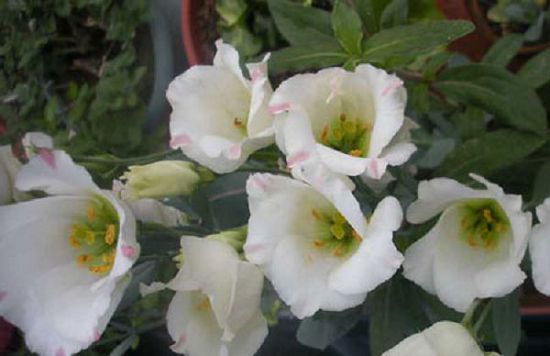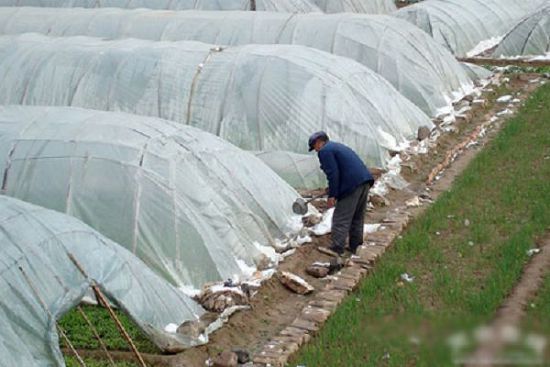Culture methods and pest control knowledge of flower plant Platycodon grandiflorum

Growth habits of Platycodon grandiflorum
Platycodon grandiflorum is native to Colorado, Nebraska, Texas and New Mexico. It has been popular in Japan and Korea since 1970s as a cut flower. Sexual preference for warm, moist and sunny environment, drought tolerance, not moisture tolerance, strict requirements for moisture, like moisture, but too much water is also disadvantageous to root growth, sensitive to light, and requires loose, fertile and well-drained soil. the pH value should be 6.5 to 7.0.
Propagation methods of Platycodon grandiflorum
Platycodon grandiflorum is commonly used for sowing and propagation, and its seeds are very small, usually about 10,000 seeds per gram, so the seeds of Platycodon grandiflorum are mostly coated. The seedling emergence rate of the coated seeds was higher. It is best to sow in the indoor pot from September to October or January to February. The seeds like light and do not need to be covered with soil. The optimum temperature for germination is 22-25 ℃. It germinates at 12-15 days after sowing, and the seedlings grow very slowly in half a month after germination. It takes 120-140 days from sowing to flowering, and 150-180 days for cut flowers. In the seedling market, Platycodon grandiflorum also has a small number of tissue culture seedlings and cutting seedlings.
Culture methods of Platycodon grandiflorum
1. Soil: Platycodon grandiflorum flowers require fertile, loose and well-drained soil. Don't keep cropping. The pot soil must be sterilized, and the soil can be treated with high temperature steam or methanol bromide.
2. Illumination: tangerine pedicel flowers are sensitive to light, and long-day sunshine is very beneficial to the growth and development of Platycodon grandiflorum, which is helpful to stem and leaf growth and flower bud formation. Generally, 16 hours a day has the best effect.
3. Temperature: Platycodon grandiflorum likes to be warm, the optimum temperature for growth is 15-28 ℃, and the night temperature during the growing period is not lower than 12 ℃. When the winter temperature is below 5 ℃, the leaves are rosette and can not blossom. It can also withstand 0 ℃ low temperature for a short time. When the temperature in the growing period exceeded 30 ℃, the flowering period was obviously shortened.
4. Watering: Platycodon grandiflorum likes wet environment, but excessive water is disadvantageous to the root growth of Platycodon grandiflorum and is vulnerable to diseases. After bud formation, high temperature and humidity should be avoided, otherwise it is easy to cause fungal diseases. At the same time, during the growing period, there was insufficient water supply, weak growth of stems and leaves, and early flowering.
Disease and pest control of Platycodon grandiflorum
1. Stem blight: 1% Bordeaux solution is sprayed at the initial stage of the disease. in severe cases, 50% methyl topiramate wettable powder 500 times and 50% Baicaoqing wettable powder 500 times can be used alternately, once every 3 to 5 days. In addition, attention should be paid to strengthening ventilation and light transmission, reducing plant density, applying nitrogen fertilizer reasonably, properly increasing phosphorus and potassium fertilizer, and improving plant disease resistance.
2. Root rot: root rot mainly infects the root and rhizome, black necrotic spots are formed in the rhizome when the disease occurs, and the plant dies in severe cases. The spread of the fungus mainly depends on soil, fertilizer, watering and so on. The application of rotten fertilizer, watering properly to avoid stagnant water, 50% carbendazim wettable powder 600 times liquid can be used at the initial stage of the disease, sprayed every 10 days or so for 2 or 3 times.
3, insect pests: the main pests of Platycodon grandiflorum are leaf miners and aphids, which can be killed with BT biological agents, and aphids can also be sprayed with 1000 times of phoxim or 40% omethoate EC 1000-1500 times.
- Prev

Prevent the yellow leaves of flowers after entering the room
Prevent the yellow leaves of flowers after entering the room
- Next

Technical measures for snow prevention and frost resistance of flower seedlings in winter
Technical measures for snow prevention and frost resistance of flower seedlings in winter
Related
- What if the leaves of potted flowers turn yellow?
- Florescence Control of several Flowers
- Anti-freezing technology and post-freezing nursing technology of flowers
- What is the classification of flowers? What are the common methods of flower classification?
- Prevention and control of alkali and acid damage of flowers in courtyard
- Technology of Anti-freezing and restoring growth of Flower seedlings in greenhouse and greenhouse
- How does flower fertilization not hurt the root? Fertilization technology of flowers
- Key points of disinfection in flower greenhouse
- Several pesticides that are banned or used cautiously in flowers
- How to fertilize the flowers that watch the leaves?

